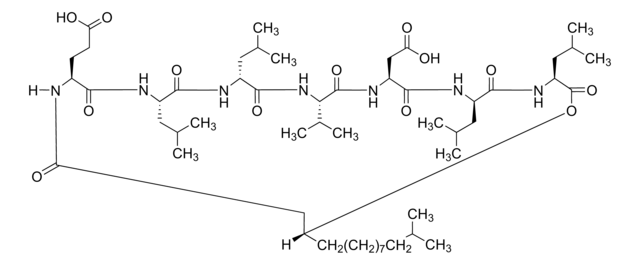R95MD
Rhamnolipids
95% (Mono-Rhamnolipid dominant)
Synonym(s):
Rhamnolipids
About This Item
Recommended Products
product name
Rhamnolipids, 95% (Mono-Rhamnolipid dominant),
biological source
Pseudomonas aeruginosa
Quality Level
form
solid/granular
greener alternative product characteristics
Design for Degradation: Greener alternative product characteristics
Learn more about the Principles of Green Chemistry.
sustainability
Greener Alternative Product
greener alternative category
, Aligned
shipped in
ambient
storage temp.
room temp
Looking for similar products? Visit Product Comparison Guide
General description
We are committed to bringing you Greener Alternative Products, which adhere to one or more of The 12 Principles of Greener Chemistry. This product has been enhanced for hydrocarbon degradation. For more information see the paper Environmental applications of biosurfacants: recent advances, and the many other articles available at: AGAE Technologies
Application
Rhamnolipids are environment friendly and biologically safe surfactants that can kill enveloped viruses. A recent study has shown 222B (10% aqueous solution made with mono-rhamnolipid predominant product R95MD) can be coated on masks to prevent or reduce the spread of enveloped viruses. Click here for more information.
Legal Information
Storage Class Code
11 - Combustible Solids
Flash Point(F)
Not applicable
Flash Point(C)
Not applicable
Certificates of Analysis (COA)
Search for Certificates of Analysis (COA) by entering the products Lot/Batch Number. Lot and Batch Numbers can be found on a product’s label following the words ‘Lot’ or ‘Batch’.
Already Own This Product?
Find documentation for the products that you have recently purchased in the Document Library.
Our team of scientists has experience in all areas of research including Life Science, Material Science, Chemical Synthesis, Chromatography, Analytical and many others.
Contact Technical Service







